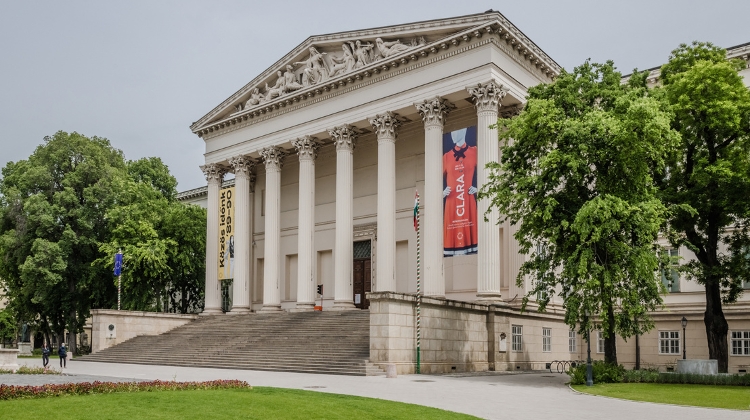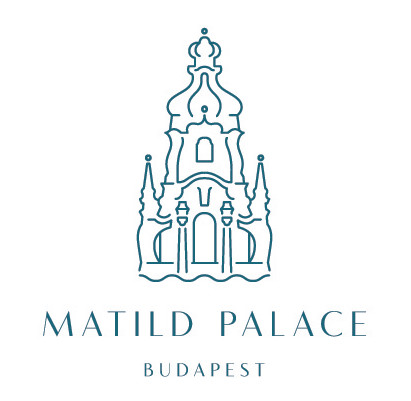Insider’s Guide: Top 10 Highlights at the Hungarian National Museum
- 5 May 2025 5:28 PM

Located in a grand neoclassical building in the heart of the capital, the National Museum here offers a fascinating look at Hungary’s whole story - from prehistoric times through medieval kingdoms, Ottoman occupation, revolutions, and the modern era – and so there’s plenty to see.
Whether you’re a new arrival or a long-time expat who hasn’t made it there yet, here’s an insider’s guide about the ‘best bits’ to save you time at this amazing and rather large museum – an institution well worth a visit come rain or shine as it may well help you appreciate your adopted home even more.
For anyone hoping to understand Hungary beyond its surface, this iconic institution is truly a must-see. So much more than a collection of relics, it’s a living, breathing narrative of a resilient, hard-working and creative people - a story still being written today. Prepare to be moved, inspired, and maybe even a little awestruck.
1. The Coronation Mantle – A Piece of Living History in Hungary

At the heart of the museum’s collection is the Coronation Mantle, one of Hungary’s most revered national treasures. Originally created in 1031 for King Stephen I, Hungary’s first king, it’s a stunning piece of medieval embroidery, rich in symbolism and religious imagery.
Though the actual crown now resides in Parliament, the Coronation Mantle provides a powerful, tangible connection to the nation’s founding over a thousand years ago. Follow this link for more info and photos about The Coronation Mantle.
2. The Medieval Stone Collection – Sculpted Legacy
The Medieval Stonework Collection offers a striking glimpse into Hungary’s architectural and religious history. Here you'll find beautifully carved Romanesque and Gothic fragments - including tombstones, reliefs, and altarpieces - many salvaged from churches destroyed during the Ottoman occupation. It’s a quieter section of the museum but rewards close attention with intricate details and haunting stories in stone.
3. The 1848–49 Revolution Exhibit – Birth of Modern Hungary
One of the most emotionally charged areas of the museum is the section dedicated to the 1848–49 Revolution and War of Independence. Through military artifacts, uniforms, paintings, and stirring personal accounts, this exhibit vividly tells the story of Hungary’s heroic but tragic fight for freedom from Habsburg rule.
This period remains deeply significant in the national consciousness, and visiting this exhibit offers real insight into modern Hungarian patriotism. Among the personal artifacts, some objects carry deep emotional weight — such as Sándor Petőfi’s ceremonial sword and Lajos Kossuth’s overcoat. These relics offer an intimate, human connection to the heroes of Hungary’s struggle for independence, bringing the pages of history to life for visitors today.
4. The Seuso Treasure – The Splendour of Roman Pannonia

One of the museum’s most dazzling displays is the Seuso Treasure, a collection of late Roman-era silverware discovered in Hungary in the 1970s.
Ornate, mysterious, and beautifully crafted, the pieces - from massive platters to intricately decorated vessels - are among the finest Roman finds ever unearthed in Europe.
Their survival and eventual return to Hungary after a long legal battle is itself an extraordinary saga worth discovering. Follow this link for more info and photos about The Seuso treasure display.
5. Treasures from the Migration Period – Warriors and Gold

The Migration Period exhibit showcases rare artifacts from the 4th to 9th centuries, when tribes like the Huns, Avars, and early Magyars shaped the Carpathian Basin.
During this time, the Carpathian Basin saw the movement and settlement of numerous tribes, including the Huns, Avars, Gepids, and early Magyars. The objects on display reveal the remarkable sophistication of these cultures, far from the outdated stereotype of a "dark age."
Highlights include elaborately crafted weapons, ornate horse gear, and stunning pieces of gold jewelry that show a fusion of artistic influences from the East and West. Together, these artifacts illuminate how Hungary’s early inhabitants lived, fought, and interacted with their neighbors across Europe and Asia. Follow this link for more info and photos about Treasures from the Migration Period.
6. Ancient Goldsmiths’ Art – Dazzling Treasures

The ancient goldsmiths’ masterpieces found in the museum’s prehistoric and early medieval collections are some of the most dazzling examples of early craftsmanship in the region.
These pieces span thousands of years, from the Bronze Age to the Migration Period, and reflect the exceptional skills of artisans who worked with gold, silver, and precious stones. Visitors can admire Celtic torques with intricate spiral designs, Avar belt fittings gleaming with repoussé patterns, and delicate grave goods that suggest both wealth and sophisticated artistry among ancient communities.
These treasures not only dazzle the eye but also reveal the cultural importance of jewelry and metalwork in symbolizing status, spirituality, and connectivity in ancient Hungary. Follow this link for more info and photos about Ancient Goldsmiths’ Art.
7. Gothic and Renaissance Art – Sacred Splendor
The Hungarian National Museum’s collection of Gothic and Renaissance art transports visitors into the deeply spiritual world of medieval Hungary. Featuring stunning altarpieces, intricately illuminated manuscripts, and richly embroidered ecclesiastical vestments, this collection demonstrates the vibrancy and resilience of religious and cultural life even through centuries of upheaval.
Surviving both the Ottoman wars and the Protestant Reformation, many of these artworks bear witness to a profound sense of devotion and artistic excellence. The painted panels are particularly captivating, with vivid depictions of saints, biblical scenes, and Hungarian patrons, offering insight into the era’s values, aesthetics, and theological concerns. Follow this link for more info and photos about Gothic and Renaissance Art.
8. Hungary Under Ottoman Rule – A Complex Heritage

The period of Ottoman occupation from 1541 to 1699 left a lasting imprint on Hungarian culture, and the museum’s exhibits bring this complex era vividly to life. You can explore displays of Ottoman weaponry, richly decorated ceramics, architectural fragments from mosques and baths, and personal items that hint at the blending of Turkish and Hungarian ways of life.
The exhibition carefully portrays both the hardships and cultural exchanges that occurred during this time, helping to explain why Ottoman heritage is still visible today in Hungarian architecture, cuisine, and even language.
By presenting artifacts from both Hungarian resistance and everyday adaptation, the museum offers a balanced and nuanced view of a transformative period in national history. Follow this link for more info and photos about Hungary Under Ottoman Rule.
9. The Modern Age – 20th Century Struggles and Triumphs
The Modern History Galleries guide visitors through Hungary’s dramatic and often turbulent 20th century. Starting with the aftermath of the Austro-Hungarian Empire’s collapse, the exhibitions chronicle the impact of the Treaty of Trianon, the devastation of two world wars, the brutal realities of communist rule, and the heroic 1956 revolution against Soviet control.
Through an evocative mix of personal artifacts, photographs, propaganda materials, and multimedia presentations, the museum paints a vivid portrait of a nation’s resilience and continual pursuit of freedom. It’s a moving and sometimes sobering experience that offers essential context for understanding Hungary’s political landscape today. Follow this link for more info and photos about The Modern Age.
10. The Grand Staircase and Frescoes – An Architectural Masterpiece

Beyond the exhibits, the Hungarian National Museum building itself is a neoclassical gem worth admiring. The grand staircase, adorned with monumental frescoes by famed artists Mór Than and Károly Lotz, greets visitors with scenes from Hungarian history rendered in a style both majestic and poignant.
Marble floors, towering columns, and elaborately decorated ceilings complete the sense of grandeur. Taking time to appreciate these architectural details is essential, as they perfectly frame the cultural treasures housed within and reflect the pride and aspirations of the Hungarian nation during its 19th-century renaissance.
Opening Hours:
Tuesday–Sunday, 10:00–18:00 (Closed Mondays)
See garden opening hours here.
Location:
1088 Budapest, Múzeum körút 14–16.
Tickets:
Adults: 3,200 HUF
Students (6–26 years old): 1,600 HUF
Seniors (62–70 years old): 1,600 HUF
Children under 6: Free
EU citizens aged 70+: Free
See more options and special discounts here.
Café & Gift Shop:
Perfect for a quick coffee and Hungarian-themed souvenirs.
More:
mnm.hu/en




























LATEST NEWS IN community & culture